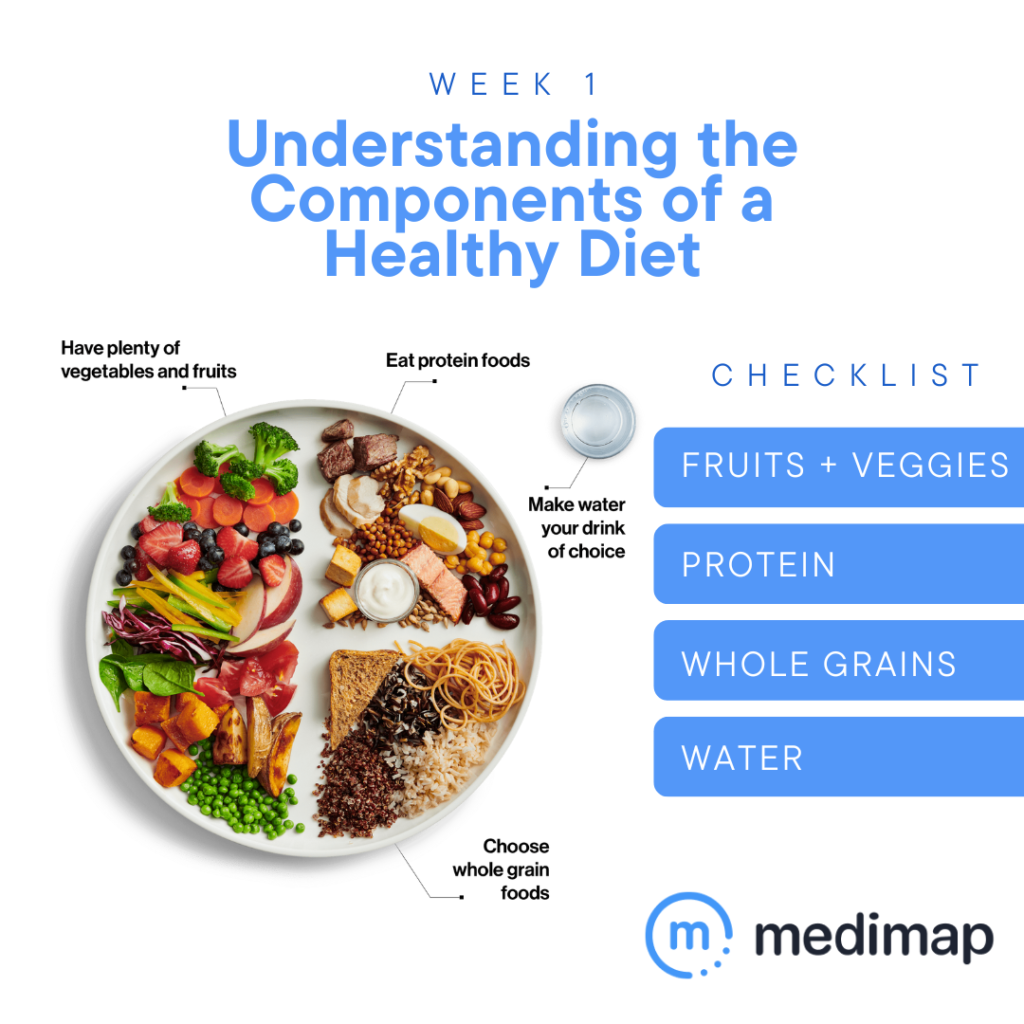Share this article
The Basics of Nutrition: Understanding the Components of a Healthy Diet
Nutrition is an essential part of a healthy lifestyle. The food we eat provides us with the energy, nutrients, and building blocks that our bodies need to function properly. However, with so much conflicting information out there, it can be challenging to understand what a healthy diet really looks like. In this post, we’ll break down the basics of nutrition and explore the components of a healthy diet.
Macronutrients
The three macronutrients that make up the bulk of our diet are carbohydrates, protein, and fat. Each of these nutrients plays a unique role in the body.
In some cases, palpitations may be caused by a harmless condition such as intense exercise or stress. However, if palpitations continue and are accompanied by other symptoms, it is important to seek medical advice to rule out any underlying heart condition causing them.
Carbohydrates: Carbohydrates are our body’s primary source of energy. They come in two forms: simple and complex. Simple carbohydrates, such as sugar, are quickly digested and can cause a rapid spike in blood sugar levels. Complex carbohydrates, such as whole grains, take longer to digest and provide a more sustained release of energy.
Protein: Protein is essential for building and repairing tissues in the body, including muscle, bone, and skin. It’s also involved in the production of enzymes and hormones. Good sources of protein include meat, fish, eggs, beans, and nuts.
Fat: Fat is a vital nutrient that helps our bodies absorb vitamins and minerals, provides insulation and protection for our organs, and helps regulate our hormones. Healthy sources of fat include nuts, seeds, avocados, and fatty fish. It’s important to avoid foods that are high in saturated and trans fat, , as they have been linked to an increased risk of heart disease and other health issues. Some examples of foods that are high in saturated and trans fats are:
Saturated fats:
- Butter
- Cheese
- Fatty cuts of meat (beef, pork, lamb)
- Whole-fat dairy products (milk, cream, yogurt)
- Coconut oil
- Palm oil
- Lard
Trans fats:
- Fried foods (french fries, fried chicken, doughnuts)
- Margarine
- Shortening
- Processed snack foods (crackers, chips, cookies)
- Fast food items (hamburgers, chicken sandwiches)
- Baked goods (pies, cakes, pastries)
Micronutrients
Micronutrients are the vitamins and minerals that our bodies need in smaller amounts to function properly. They play essential roles in a range of bodily processes, from immune function to energy production.
Vitamins: There are 13 essential vitamins that our bodies need to function properly. Each vitamin plays a unique role in the body. For example, vitamin C is important for immune function, while vitamin D is critical for bone health.
Minerals: Like vitamins, minerals are essential for a range of bodily processes. Examples include calcium, which is necessary for strong bones, and iron, which is critical for the production of red blood cells.
Water: Water is often overlooked as a nutrient, but it’s essential for life. It helps regulate body temperature, lubricates joints, and aids in digestion and nutrient absorption.
Putting it all together: What does a healthy diet look like?
A healthy diet should be balanced and provide all of the essential nutrients that our bodies need. Here are some general guidelines:
- Fill your plate with a variety of fruits and vegetables. Aim for at least five servings per day.
- Choose whole grains, such as brown rice, quinoa, and whole wheat bread, over refined grains.
- Include lean protein sources, such as fish, poultry, tofu, and beans, in your diet.
- Limit your intake of red and processed meats, which have been linked to increased risk of chronic diseases.
- Choose healthy fats, such as those found in nuts, seeds, avocado, and olive oil, over saturated and trans fats.
- Limit your intake of sugary drinks, processed snacks, and foods high in added sugars.
- Stay hydrated by drinking plenty of water throughout the day.
- Moderate your alcohol intake, if you choose to drink.
- Make sure to pay attention to portion sizes and aim to eat a balanced mix of nutrients at each meal.
Canada’s food guide provides a food guide snapshot that shows what your plate should look like. Half of your plate should consist of fruits and vegetables, a quarter of your plate of protein foods, and a quarter of your plate of whole grains. It also states that your preferred beverage should be water.

It’s important to note that everyone’s nutritional needs are different and may vary depending on factors such as age, gender, activity level, and any medical conditions or dietary restrictions. Consulting a healthcare professional or registered dietitian can help you determine the best diet for your individual needs.
To easily search, compare and book an appointment with a dietitian near you, check out this page.
To learn more about health practitioners in your area or to ask about providers who address specific treatment needs, contact us today.



